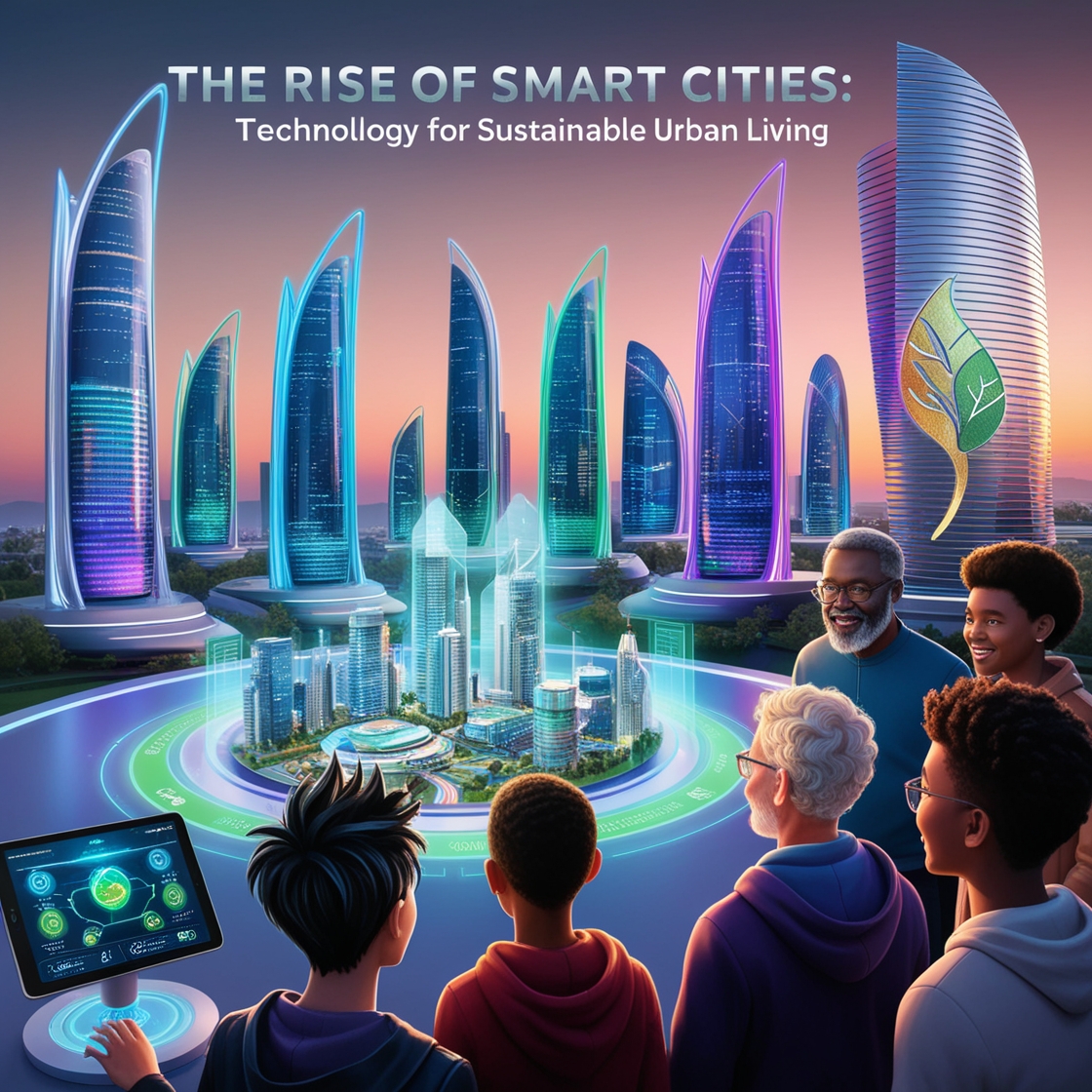Introduction
In recent years, the concept of smart cities has gained significant traction as urban areas look for ways to enhance the quality of life for their residents. A smart city is more than just a buzzword; it represents a dynamic blend of technology, sustainability, and innovation aimed at creating a better living environment. But why is sustainable urban living becoming increasingly vital? As cities swell with population, the strain on resources becomes more pronounced. The rise of smart cities aims to address these challenges through the effective use of technology.
Understanding Smart Cities
What Makes a City “Smart”?
A smart city is characterized by its ability to leverage digital technology to enhance performance, efficiency, and quality of life. By integrating various information and communication technologies (ICT), smart cities can optimize their operations, from public transportation to waste management. It’s about using data to make informed decisions, thereby improving the city’s services and the residents’ overall experience.
Key Technologies Involved
Key technologies that define smart cities include the Internet of Things (IoT), artificial intelligence (AI), big data analytics, and renewable energy solutions. These elements work together to create a seamless urban ecosystem, facilitating everything from traffic management to energy consumption.
The Need for Smart Cities
Urbanization Trends
According to the UN, more than 55% of the world’s population lives in urban areas, a figure that is projected to reach 68% by 2050. This rapid urbanization presents significant challenges, including increased pollution, traffic congestion, and resource scarcity.
Challenges of Traditional Urban Living
Traditional cities often struggle with outdated infrastructure, inefficient resource management, and poor service delivery. The need for smart cities arises from the necessity to address these issues while promoting sustainability and resilience.
Technological Innovations Driving Smart Cities
IoT (Internet of Things)
IoT devices connect various elements of urban infrastructure, allowing real-time data collection and analysis. For instance, smart sensors can monitor air quality, traffic patterns, and energy usage, providing valuable insights for city planners.
AI and Machine Learning
AI algorithms can analyze vast amounts of data to predict trends and optimize services. For example, predictive analytics can improve traffic flow by adjusting signal timings based on real-time conditions.
Big Data Analytics
The ability to collect and analyze big data enables city officials to make data-driven decisions that enhance urban planning and resource allocation.
Renewable Energy Solutions
Smart cities increasingly adopt renewable energy sources, such as solar and wind, to reduce their carbon footprint and create sustainable energy solutions.
Smart Infrastructure
Smart Transportation Systems
Smart transportation systems integrate various modes of transport, including public transit, cycling, and pedestrian pathways. This encourages a shift away from car dependency and reduces congestion.
Energy-efficient Buildings
Smart buildings incorporate energy management systems to optimize energy usage. This not only reduces costs but also minimizes the environmental impact.
Waste Management Solutions
Innovative waste management solutions, like smart bins that alert services when they are full, help cities maintain cleanliness while optimizing collection routes.
Sustainable Living Initiatives
Green Spaces and Urban Planning
Sustainable urban living emphasizes the importance of green spaces. Parks and recreational areas improve air quality and enhance residents’ well-being.
Community Engagement in Smart Solutions
Engaging residents in the planning and implementation of smart solutions fosters a sense of ownership and ensures that initiatives meet community needs.
Case Studies of Successful Smart Cities
Barcelona: A Leader in Smart City Innovation
Barcelona has integrated technology across various sectors, from smart street lighting to a robust public transportation system. The city serves as a model for how technology can enhance urban living.
Singapore: The Model for Sustainable Urban Living
Singapore has implemented a comprehensive smart nation initiative, focusing on improving quality of life through digital technology and sustainable urban planning.
Amsterdam: Integrating Technology for Better Living
Amsterdam has embraced smart technology to optimize everything from public transport to energy management, making it one of the most livable cities in the world.
Challenges and Considerations
Privacy and Data Security
As cities become smarter, concerns over data privacy and security increase. It’s crucial to establish frameworks that protect residents’ information while utilizing data for city planning.
Equity and Accessibility
Ensuring that smart city initiatives benefit all residents, regardless of socio-economic status, is essential for fostering equity.
Funding and Investment Issues
Developing smart cities requires significant investment. Governments and private sectors must collaborate to fund these initiatives effectively.
Future Trends in Smart Cities
The Role of 5G Technology
The rollout of 5G technology promises to enhance connectivity and data transfer speeds, enabling more sophisticated smart city applications.
Impact of Climate Change on Urban Planning
Climate change poses significant challenges for urban areas. Smart city planning must incorporate strategies for resilience and adaptation.
Conclusion
The rise of smart cities represents a promising solution for sustainable urban living. By leveraging technology, cities can improve the quality of life for residents, enhance resource management, and promote environmental sustainability. The journey toward smart cities is a collective effort that requires collaboration among governments, businesses, and communities. So, let’s embrace the change and work together for a smarter, more sustainable future!
FAQs
What are the main benefits of smart cities?
Smart cities enhance the quality of life through improved infrastructure, efficient resource management, and reduced environmental impact.
How do smart cities use technology to improve urban living?
By integrating technologies like IoT and AI, smart cities optimize services such as transportation, waste management, and energy consumption.
Are smart cities affordable for all residents?
Ensuring affordability requires inclusive planning and investment in community engagement to benefit all socio-economic groups.
What challenges do cities face in becoming “smart”?
Key challenges include data privacy, equity in service access, and securing necessary funding for technological investments.
How can citizens contribute to the development of smart cities?
Residents can engage in community planning, provide feedback on initiatives, and advocate for sustainable practices in their neighborhoods.
